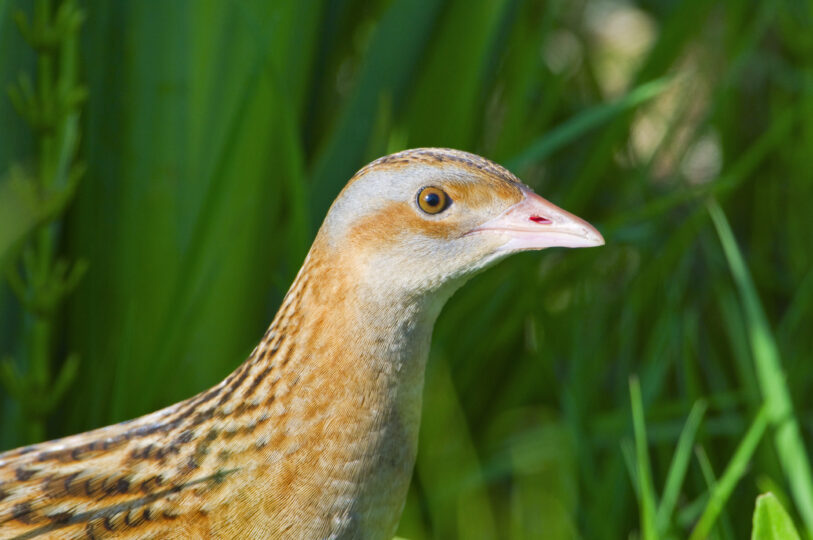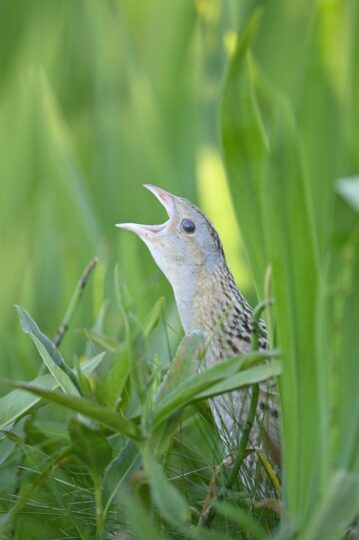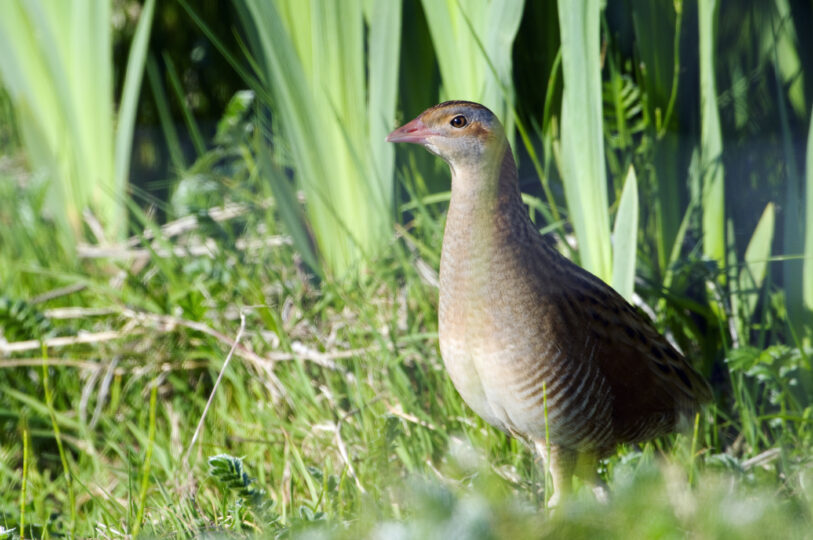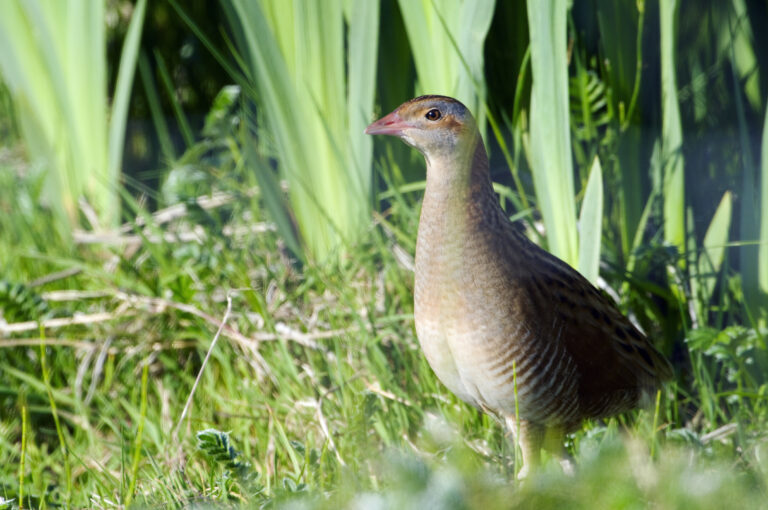
Key facts
- Gaelic name: Traon
- Length: 27 – 30cm | Wingspan: 46 – 53cm | Weight: 120 – 200g
- When in Scotland: April – September
- UK Conservation status: Red
- Species on the Edge areas: Argyll and the Inner Hebrides
Species information
How to identify
The corncrake is a member of the rail family, related to coots and moorhens. Corncrakes have yelllowish-brown plumage with darker streaks on the back, and grey patches on the throat and above the eye. They are slightly larger than a blackbird. Corncrakes have a distinctive breeding call – a raspy rattle – which is given mostly at night, sometimes unrelenting for hours. Listen (Credit: Mathias Ritschard / xeno-canto )
Life cycle
Female corncrakes look after the eggs and chicks alone. Although they cannot fly until they’re around 35 days old, the female will often abandon her first brood at 12 days old, so she can start another nest. Corncrakes make an annual migration of over 10,000 miles to winter in central and southern Africa.
Distribution
Corncrakes are now largely restricted to a small number of island and coastal strongholds in Scotland and Ireland. Breeding corncrakes are now mostly restricted to the western and northern islands of Scotland. They are summer visitors, wintering in central and southern Africa.
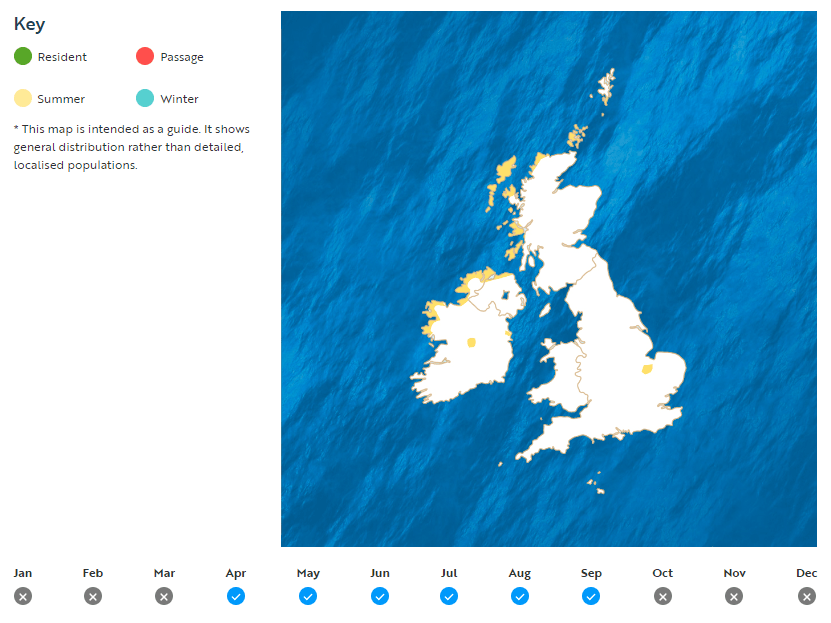
Corncrake UK distribution map (c) RSPB www.rspb.org.uk/birds-and-wildlife/corncrake
Habitat and feeding
Corncrakes breed and nest in tall plant cover such as meadows or silage fields. They are a secretive bird; it is more usual to hear the males calling than to see them.
They feed mainly on insects, snails, slugs, worms and seeds.
Conservation status
UK Conservation Status: Red
Threats
What Species on the Edge is doing
- Providing additional early cover areas for corncrake in the Inner Hebrides
- Engaging with landowners and farmers to encourage management for corncrake, including corncrake-friendly mowing
How you can help
Help with the conservation of corncrakes by helping us learn more about them. If you’ve seen or heard a corncrake, let us know. Find out more about recording corncrake observations here: Listening out for corncrakes
How you can help
Help with the conservation of corncrakes by helping us learn more about them. If you’ve seen or heard a corncrake, let us know. Find out more about recording corncrake observations here: Listening out for corncrakes
Resources
- Corncrakes | Farm Advisory Service
- Crofting and Corncrakes (Podcast) | Farm Advisory Service
- Corncrakes – A guide to habitat management | RSPB
pdf 539 KB - Farming and crofting for wildlife – Silage and hay management | RSPB
pdf 250 KB - Hay and silage meadows – practical management advice | RSPB
pdf 358 KB

